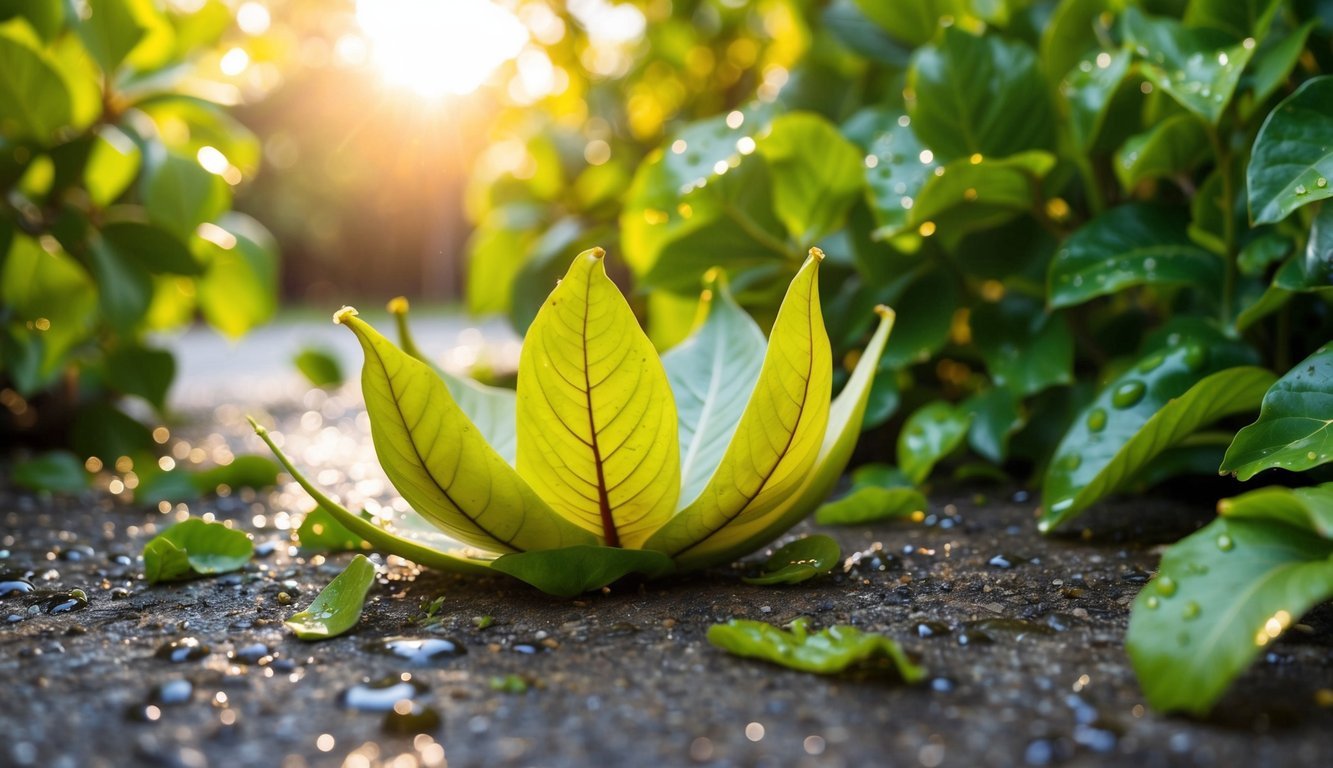
Noticing leaves falling off your fiddle leaf fig? You’re not alone, and there are many reasons why this might happen.
The fiddle leaf fig, scientifically known as Ficus lyrata, is a stunning indoor plant prized for its large, shiny, oval leaves.
While its beauty is undeniable, caring for it can be quite tricky.
Originating from the warm, humid regions of western Africa, this tropical plant thrives on bright light, high humidity, and consistently moist soil.
When it doesn’t get what it needs, or when it’s under stress, leaf drop can occur.
We tapped into the expertise of horticultural specialists to uncover the most common culprits behind this problem and their recommended solutions.
OVERWATERING
One major reason your fiddle leaf fig might be shedding leaves is due to excessive watering.
When the soil is drenched, the roots can suffocate, and you may end up with root rot.
Typical indicators of this issue include leaves turning brown before they fall off.
To prevent overwatering, feel the soil with your fingers.
If it’s still moist or wet, hold off on adding more water for a few days.
If you encounter consistently soggy soil, it might be time to repot your plant in fresh, well-draining soil.
UNDERWATERING
On the flip side, not giving your fiddle leaf fig enough water can also lead to leaf loss.
It’s crucial to keep an eye on the soil moisture.
If the top half of the potting mix feels dry, it’s time for a good drink!
TOO MUCH SUNLIGHT
While these plants love bright light, a sudden shift to intense direct sunlight can scorch their leaves.
To dodge damage, gradually introduce your fiddle leaf fig to brighter conditions over a few weeks.
Equally important is the light balance; moving the plant from a sun-soaked spot to a dimly lit area can shock it, resulting in leaf drop.
Ease this transition by slowly acclimatizing the plant to its new light environment.
Pests can pose a serious threat to the health of your fiddle leaf fig, potentially causing leaves to fall off.
Whenever you bring a new plant into your home, inspect it closely for pests to prevent infestations from spreading.
Diseases can also harm your fiddle leaf fig and lead to leaf drop.
To keep your plant healthy, ensure it has sufficient light, proper watering, and regular fertilization.
Treatment will depend on the specific issue affecting your plant.
When your fiddle leaf fig runs out of space, becoming root bound, it may start losing leaves due to a lack of essential water and nutrients.
If this happens, consider repotting it in a larger pot, ideally one that’s 2 to 3 inches wider in diameter.
If the humidity drops below 30%, it can put stress on your plant, causing it to drop leaves.
To tackle this, you could use a humidifier nearby or group your fiddle leaf fig with other plants to create a more humid microclimate.
Sudden changes in temperature, along with exposure to drafts, can negatively impact your fiddle leaf fig and lead to leaf loss.
If you need to move it, do so gradually to minimize shock to the plant.
Finally, it’s essential to acknowledge that leaf drop can also be a part of your plant’s natural aging process.
While this is inevitable, it’s noteworthy that fiddle leaf figs can live indoors for about 10 to 15 years, and in their native habitat, they might thrive for up to 50 years.
By recognizing these potential challenges and their solutions, you can help your fiddle leaf fig maintain its health and beauty, ensuring it remains a vibrant part of your indoor space.
Source: Marthastewart

